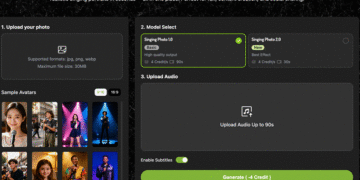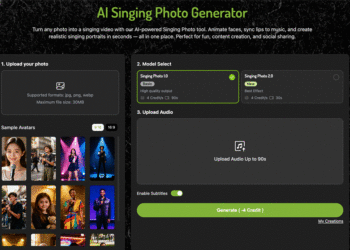Cross-platform testing is an inevitable process in software development that checks that the applications work properly in multiple operating systems, devices, and browsers.
Due to the growing population of distinctive user environments, testing over several platforms will help to find out the absence of consistency as well as the lack of interface.
By following the guides in this article, you are guided through the best way of executing cross-platform testing, such as environment setup, test coverage, automation, and performance evaluation.
Understanding Cross-Platform Testing
Software testing, which is cross-platform testing, is the process of testing the software application on different sets of Operating Systems, devices, and browsers to ensure that the software application is working properly and the user experience is as expected.
This will help developers to ensure that the application will consistently respond in a way that will minimize the bugs and compatibility problems that might have been triggered because of platform-specific differences.
Why should you Undertake Platform Testing?
Users today are using applications from multiple ends, including smartphones, tablets, desktops, smart TVs, smartwatches, etc. These unexpected issues can arise from variations in hardware, software configurations, and network conditions.
Cross Cross-platform testing helps a team in finding and solving compatibility-related bugs as early as possible in the development cycle while reducing the cost of post-release fixes.
Key Aspects of Cross-Platform Testing
1. Define Target Platforms and Devices
User base relevance establishes the platforms and operating systems and the browsers and devices that must be included in testing before its initiation.
Teams achieve maximum efficiency in testing efforts by identifying the prominent environments first before they allocate testing resources to guarantee the best coverage.
2. Establish a Test Matrix
The test matrix serves as a tool that specifies how various platforms should be tested, including screen sizes alongside browser versions and operating system update types.
The defined system provides extensive area coverage and maintains focus on important test situations that directly affect user outcomes.
3. Implement Test Automation
Using automated cross-platform testing will result in better speed and efficiency due to its ability to run the same repetitive test cases on various environments rapidly.
The testing software Selenium, Appium, and TestComplete enable users to conduct automatic testing across multiple platforms, leading to consistent evaluation of application behaviours.
4. Conduct UI and UX Testing
User interface testing with user experience testing guarantees that the application retains design consistency combined with proper layout and interactions throughout different platforms.
The screen resolution, together with aspect ratio and rendering engine differences, require UI response along with usability checks since visual elements can be affected.
5. Perform Functional Testing
A strategic method of testing confirms the basic operational ability of essential features and workflow sequences when used between platforms.
Users can consistently access intended functionalities through functionality testing, which validates navigation and input forms data sync and third-party connectivity across all devices and browsers.
6. Test Performance and Load Handling
The evaluation of system performance through performance testing depicts the reaction of applications as they handle varied performance benchmarks, including diverse connection speeds and simultaneous user interactions, together with the maintenance of distinct device computing capabilities.
The performance evaluation of applications across different environments follows through the use of JMeter and LoadRunner testing tools that stop scalability concerns.
Cross-Device Testing
Validation of software has to include cross-device testing in which software works properly on different types of devices, including mobile phones, tablets, and personal computers, and in the case of emerging technologies such as wearables and IoT-enabled systems.
Further, with the variety of hardware, screen sizes, mores, and input types of Windows phones these days, testing across so many different devices can help developers discover issues in user experience, adjust layout responsivity, and run system interactions.
Cross-device testing is important to ensure that an application performs well despite the target devices, otherwise, there may be instances where an application does well on one device but miserably on another, which will make users dissatisfied and could even cause revenue loss.
In addition, cross-device testing is also implemented to ensure that the software satisfies the accessibility and usability standards applicable to the user who prefers interaction with the software via touch, stylus, mouse, or keyboard.
Devices have wide variances of factors like resolution scaling, battery consumption, network latency, and GPU processing capabilities, so it is necessary to test the application under real-world conditions.
Using the strategic cross-device testing approach, proactively tackling any potential mishaps, thereby cutting our responsive product fixing bills to the minimum and ultimately creating an awesome experience for our users as well as the brand itself.
- Emulators and simulators are great during the initial stages of testing, but to realistically test actual users, network changes and hardware-related performance issues not found in such environments are required.
- Testing of gestures such as pinch, swipe, or tap is necessary on devices with touchscreens, as no other screen will function this way, and the interaction will be smooth and work on all screen sizes and in all operating systems without lag or unintended behaviour.
- Since battery efficiency is one of the most important aspects for mobile and tablet users, tests for over usage and excessive waste of CPU, RAM, and GPU are called for to optimize energy consumption and not use resources non-necessity.
- Applications fall into the carrier validation category, which is tested under fast broadband, 4G, 5G, and slow or unsteady connections to guarantee stability, performance, and data synchronization in the real world.
Conclusion
The delivery of software that performs across various environments consistently requires a good cross-platform testing strategy.
Identifying target platforms, using automation of testing, UI/UX testing, and functional testing, and resolving issues related to performance and security contribute to making software quality and user satisfaction better.
Moreover, Cross-Device Testing is meant to provide the same experience on any hardware configuration to enhance availability and engagement.
With each passing day, different technologies are progressing rapidly, and maintaining cross-platform tests will be essential to ensure the long-term success of the software.











































































